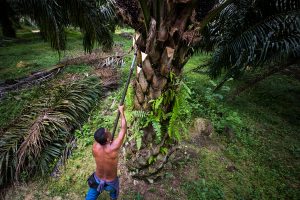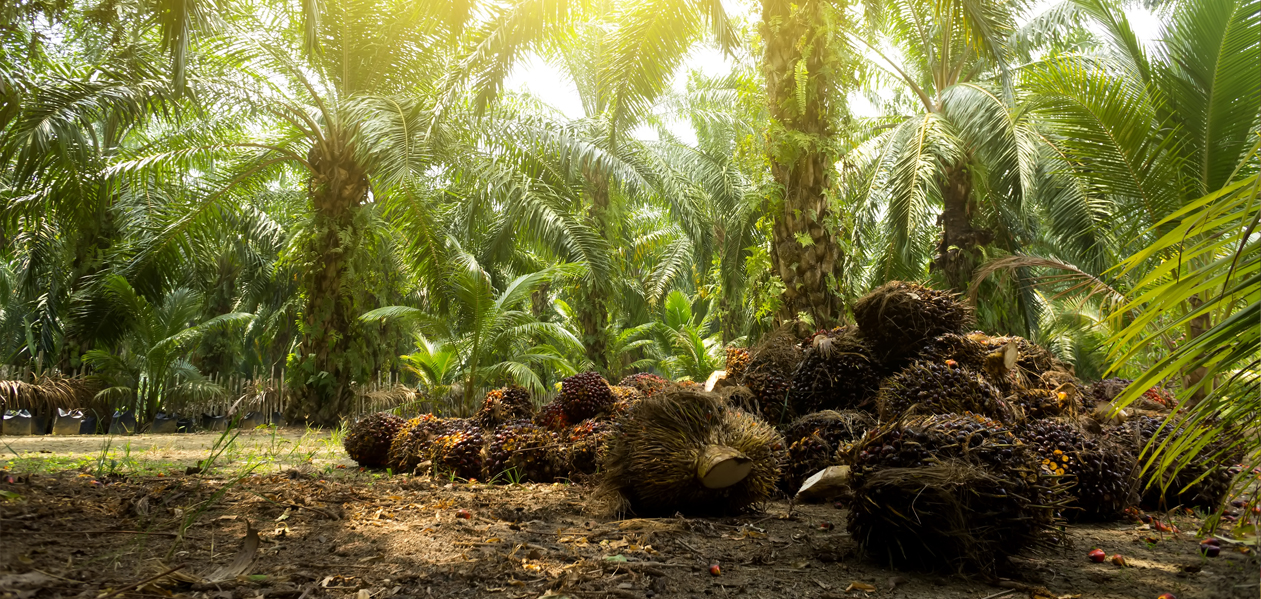Why Palm Oil Isn’t the Enemy
Why Palm Oil Isn’t the EnemyIf you watched last night’s premiere of “Years of Living Dangerously,” the new Showtime series about the impacts of climate change, you likely found yourself thinking palm oil’s pretty bad stuff.

As CI vice chair Harrison Ford flew over scorched patches of former forest being planted with palm oil and visited orphaned orangutans in Indonesia, it’s hard not to have a visceral reaction to this devastation.
So you may be surprised to hear an environmentalist say that palm oil itself isn’t the enemy — it’s where and how it’s grown that we need to change.
As far as edible oils go, palm oil is actually quite good. For starters, the oil palm tree, which is the source of palm oil, is highly productive. Oil palm yields 4–10 times more oil per hectare than other oilseed crops, including soybean and canola.
Put another way, this means more oil produced on less land. In fact, palm oil represents about 38% of the world’s supply of edible oil, but it’s grown on only 5% of the land dedicated to oilseed crops globally. With international demand for edible oils growing steadily, more oil from less land is a good thing.
Odds are you consume palm oil every day — you just don’t know it. In Asia, where the vast majority of palm oil is produced and consumed, it is a common cooking oil. Here in the U.S., it’s estimated that palm oil or ingredients derived from it are used in half of the products on the average supermarket shelf.
So yes, it’s in your cookies, your baked goods, your margarines, your lipsticks and skin lotions, your shampoo and toothpaste and a wide range of other packaged foods and personal care products. In part, that’s because palm oil is a highly versatile product that lends itself well to food products and processing, and is naturally free of trans fats. That’s good.
It’s also valuable. Palm oil generates tens of billions of dollars in revenue for producing countries, and is estimated to employ more than 6 million people globally. That’s good, too.

So, is it all good news? Definitely not.
Deforestation, draining and planting palm on peat lands, land disputes with rural communities — all of these have been major consequences of the global palm oil boom. Many problems stem from the fact that too much oil palm has been planted at the expense of tropical forest.
These forests are a critical source of food, medicines and other materials; they are vital to regulating weather patterns and buffering local communities from storms and floods, and are home to many of the world’s most unique and threatened species (including orangutans). Forests also play a critical role in maintaining healthy watersheds and river systems that are essential for communities and downstream agriculture.
And loss of forests doesn’t just impact local communities. Deforestation is one of the leading sources of greenhouse gas emissions that are driving climate change.
So now what? Do you have to walk away from your cookies and doughnuts? Do I think Indonesia, the world’s largest producer of palm oil, should stop planting oil palm? No.
Palm oil and deforestation do not have to go hand in hand. In fact, there are massive efforts underway to break this cycle and put the palm oil sector on a path to sustainability.
For example, I sit on the board of governors of the Roundtable on Sustainable Palm Oil (RSPO). This is a network of hundreds of organizations with interests in the global palm oil supply chain, from oil palm growers to consumer goods manufacturers to NGOs including CI.
The RSPO has developed a set of sustainability standards for the industry, and in just six years, the group has certified 16% of global production. In addition, several major producers are voluntarily exceeding these standards, and the Indonesian government has developed a national standard with the Indonesian Sustainable Palm Oil (ISPO) initiative.
Here’s more good news: Indonesia and other palm oil-producing countries can produce more without cutting down additional forests. The World Resources Institute estimated there may be 14 million hectares (more than 34.6 million acres — an area about twice the size of Ireland) of previously cleared or “degraded” land in Indonesian Borneo alone that could potentially be suitable for palm oil. Compared to the roughly 9 million hectares (22.2 million acres) currently covered by oil palm in Indonesia, that’s room for a lot of growth without clearing more forest.

There are also opportunities to significantly increase productivity on existing palm plantations. Indonesia’s smallholder producers represent approximately 40% of palm oil cultivation, but their yields per hectare are half the Indonesia national average.
Efforts like CI’s Sustainable Landscapes Partnership in North Sumatra are working to help growers increase productivity on existing lands while simultaneously working with local government and communities to protect critical forests in the production landscape.
Is the palm oil industry sustainable? Not yet, but it’s heading in the right direction.
Indonesia has a critical opportunity to build a better industry while protecting its remaining forests. The government has some good initiatives and policies in place, but they need better and stronger enforcement.
As a consumer, you too have a voice — and you should use it. If your favorite product contains palm oil, contact the manufacturer and ask them to use certified sustainable palm oil from suppliers that have made a clear commitment to halt deforestation. If the manufacturer already uses sustainable palm oil, ask them to indicate this on product packaging to help consumers make the best choice to protect the environment.
The RSPO Shopping Guide lists products that carry the RSPO logo. You can also check here to find out if a company is a member of the RSPO and see what actions they are taking to improve the sustainability of their supply chains.
There are good things happening in the palm oil sector, and consumers should support those leading the charge.
– See more at: http://blog.conservation.org/2014/04/why-palm-oil-isnt-the-enemy/#sthash.vbdmtrBS.chvR1DGK.dpuf








Leave a Reply